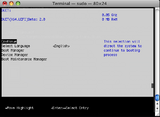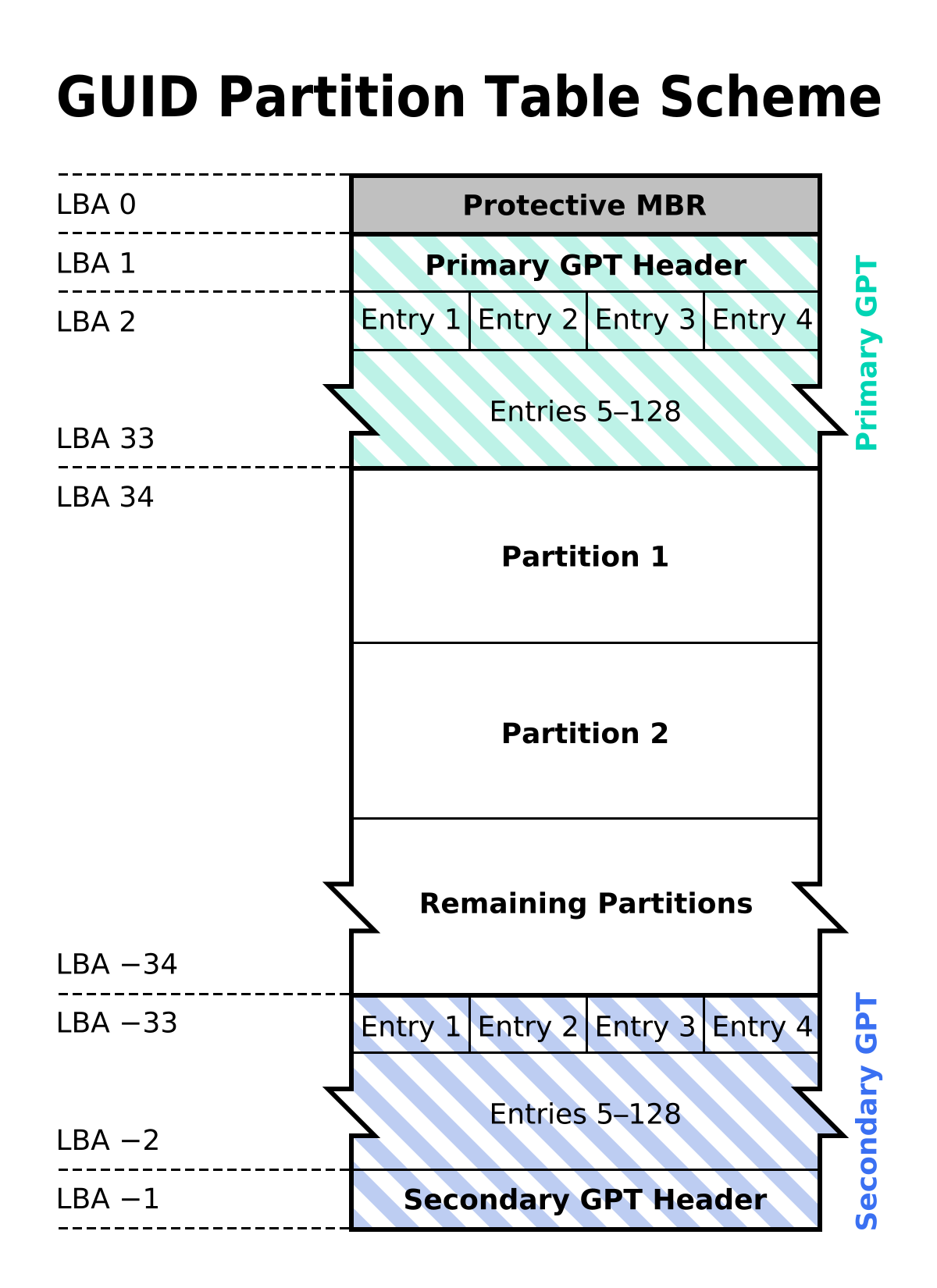Announcement
Collapse
No announcement yet.
AMD Publishes New Chipset Documents
Collapse
X
-
Well, those docs certainly made for interesting reading. It highlighted a fact that I hadn't realized until now - a lot of the BIOS comes from AMD as a blob, and you're just suppose to call into it or provide callbacks to it from your own main BIOS code. So in some respects the hardware initialization is still a black box...
-
In practice too, using syslinux gptmbr.bin which allows booting GPT disks from non-EFI systems. (Syslinux has no GPT chainloading support yet, though)
Leave a comment:
-
It seems that you misunderstand something about coreboot + payloads.Originally posted by cutterjohn View PostIIRC that is a function of the BIOS, as it is the BIOS that is first started once the machine is turned on and is responsible for initial booting of the OS as well as basic hardware config beyond the powerup defaults...
Even if the BIOS doesn't support it I imagine that a bootloader might be able to work around the limitation...
Coreboot itself does "just" the job the hardware initialisation.
The payload is the part of software which is called by coreboot when the hardware is "ready to go".
A "BIOS" image with coreboot needs to contain one or more payloads, otherwise your machine won't boot anything.
I think that it is not a good idea to look at coreboot with the classical/typical bios approach. The way things are done in coreboot is quite different compared to a classical bios.
When grub2 does support the "GUID Partition Table" it will work with coreboot, as grub2 is a vaild payload.
You can also use for example a Linux vmlinux image as coreboot payload, and when you compile the kernel without harddisk drivers, you won't have access to a harddisk, but maybe you don't need it. There are hardly limitations for realising your ideas on "what should the boot progress do for my use/needs" on using coreboot.
If you like tetris and you don't want to do something else with your computer then check out the tint payload. (You won't need a harddisk in that case to play a tetris-style-game.)
When you say "a function of BIOS" it sounds for me like "what the bios isn't able to do nobody can do" - but as coreboot replaces the bios nearly everything what hardware can do could be done. And therefore good hardware documentation as AMD provides is really nessecary for getting coreboot running on a system.
Thanks AMD for providing hardware documentation for recent mainboard-chipsets! (Hopefully the frist AM3 boards can be supported within a few weeks/months.)
Over-/Underclocking is also possible with coreboot (and a few more things which can be realized with a processor - e.g. using the cache as ram (CAR) before initializing the ram (romcc)).
But right now there is no "fancy-bios-gui" for changeing settings for overclocking/underclocking. (changing coreboot code & recompiling would be needed)
Kind regards,
Harald
Leave a comment:
-
Well it has a "protective" mbr, so in theory you could put a bootloader in the first bytes too...
Leave a comment:
-
IIRC that is a function of the BIOS, as it is the BIOS that is first started once the machine is turned on and is responsible for initial booting of the OS as well as basic hardware config beyond the powerup defaults...Originally posted by Louise View PostI wonder if Coreboot are working on adding GUID Partition Table support?
As I found out lately, harddisks can not exceed 2TiB with the classic MBR. GUID is needed.
Or does these Southbridges support GUID perhaps?
Even if the BIOS doesn't support it I imagine that a bootloader might be able to work around the limitation...
AFAIK the only system that uses GUID ATM is OSX, and they use EFI (Extensible Firmware Interface from Intel, which they used as a replacement for OpenFirmware when they switched from powerpc. Either one of those are much nicer to work than traditional PC BIOSes as they are much mroe malleable and useful at boot-time...) [EDIT] Oh, yes, either of those replace the traditional BIOS, so machines with those do NOT have what most here would consider a BIOS although they provide much the same function in addition to MANY other things and are, well, extensible by design... [/EDIT]Last edited by cutterjohn; 09 August 2009, 07:16 AM.
Leave a comment:
-
the word your looking for is petition.Originally posted by Cairo_BR View PostHi lads, it would be good if ati linux users who have "old" graphic cards make a undersigned(I don't know if this is the correct word(google translate))
and AMD has actually done alot for linux users of late - but between documentation of chipsets, drivers, open/closed source driver developement, etc, dropping the support for older graphics hadware was something they felt would help them give the best support to the largest amount of people.
that said, go for it - i certianly think bringing kernel/xorg updates to legacy drivers would be nice.
Leave a comment:
-
Hi lads, it would be good if ati linux users who have "old" graphic cards make a undersigned(I don't know if this is the correct word(google translate)) to AMD to they make patches to the old 9.3 catalyst driver be compatible with xserver 1.6 and, possibly, to new kernels. This could be just for while radeon/radeonhd opensource drivers aren't ready enough to manage video-out ports and 3d resources fully.
I confess the impression AMD gave to me is that they don't care for their product users, and I've my notebook with radeon x1250/690M for less than one year. I, and I believe a lot of people, want to have the lastests resources that new distros, apps, games and bugfixes that depends of newer kernels(not only of the graphic card world) could give, if the situation won't change the "neigbhor's garden will always be greener"....
Leave a comment:
-
3 letters why...... EFIOriginally posted by NeoBrain View PostThey are still as mostly unsupported at they were a year ago. Support has been added for some _mobile_ Intel Core 2 Duo chipset, but apart from that I haven't seen any change in the Socket 775 area.
I wonder how come Intel is such a nice player in OSS graphics but not for coreboot
Leave a comment:
-
They are still as mostly unsupported at they were a year ago. Support has been added for some _mobile_ Intel Core 2 Duo chipset, but apart from that I haven't seen any change in the Socket 775 area.Originally posted by whizse View PostWhat's the latest about CoreBoot on Intel platforms?
I seem to recall hearing they're nowhere near as open about this as they are when it comes to GPUs. Is this still the case today? Are there any petitions or lobbying going on to convince them otherwise?
I wonder how come Intel is such a nice player in OSS graphics but not for coreboot
Leave a comment:




Leave a comment: